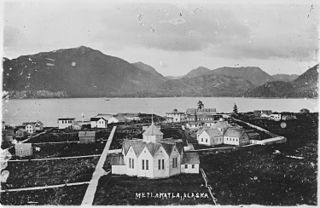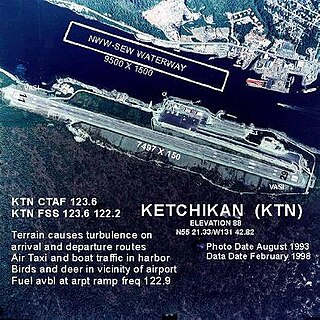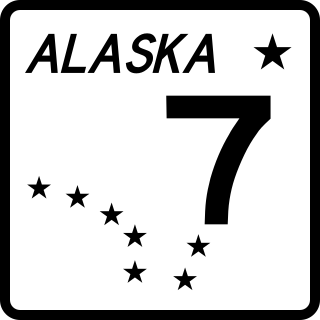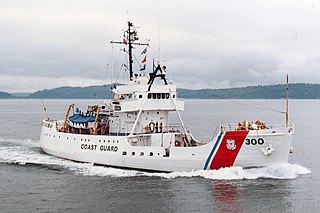
Ketchikan is a city in and the borough seat of the Ketchikan Gateway Borough of Alaska. It is the state's southeasternmost major settlement. Downtown Ketchikan is a National Historic District.

Craig is a city in the Prince of Wales-Hyder Census Area in the Unorganized Borough in the U.S. state of Alaska. The population was 1,036 at the 2020 census, down from 1,201 in 2010.

Metlakatla is a census-designated place (CDP) on Annette Island in Prince of Wales-Hyder Census Area, Alaska, United States. At the 2010 census the population was 1,405; this had grown to 1,454 by the 2020 census.

Prince of Wales Island is one of the islands of the Alexander Archipelago in the Alaska Panhandle. It is the fourth-largest island in the United States and the 97th-largest island in the world.

The Alexander Archipelago is a 300-mile (480 km) long archipelago in North America lying off the southeastern coast of Alaska. It contains about 1,100 islands, the tops of submerged coastal mountains that rise steeply from the Pacific Ocean. Deep channels and fjords separate the islands and cut them off from the mainland. The islands shelter the northern part of the Inside Passage as it winds its way among them.
Revillagigedo Island is an island in the Alexander Archipelago in Ketchikan Gateway Borough of the southeastern region of the U.S. state of Alaska. Running about 89 km (50 mi) north-south and 48 km (35 mi) east-west, it is 2,754.835 km² (1,063.65 mi²) in area, making it the 12th largest island in the United States and the 167th largest island in the world. Its center is located near 55°38′03″N131°17′51″W.

Annette Island or Taak'w Aan (Tlingit) is an island in the Gravina Islands of the Alexander Archipelago of the Pacific Ocean on the southeastern coast of the U.S. state of Alaska. It is at 55°08′06″N131°27′21″W. It is about 18 km (11 mi) long and about 18 km (11 mi) wide. The land area is 332.573 km2 (128.407 sq mi). Annette Island is located west across the Revillagigedo Channel from the Alaska mainland and south of Revillagigedo Island. The Island was named in 1879 by William Healey Dall, an American naturalist and explorer in Alaska, in honor of his wife Annette Whitney Dall.

Gravina Island is an island in the Gravina Islands of the Alexander Archipelago in southeastern Alaska. It is 21 miles (34 km) long and about 9.5 miles (15.3 km) wide, with a land area of 94.81 square miles (245.6 km2). The island had a population of 50 people at the 2000 census.

Ketchikan International Airport is a state-owned, public-use airport located one nautical mile (2 km) west of the central business district of Ketchikan, a city in Ketchikan Gateway Borough in Alaska, U.S. state that has no direct road access to the outside world or to the airport. The airport is located on Gravina Island, just west of Ketchikan on the other side of the Tongass Narrows. Passengers must take a seven-minute ferry ride across the water to get to the airport from the town.
The Gravina Island Bridge, commonly referred to as the "Bridge to Nowhere", was a proposed bridge to replace the ferry that currently connects the town of Ketchikan, Alaska, United States, with Gravina Island, an island that contains the Ketchikan International Airport as well as 50 residents. The bridge was projected to cost $398 million. Members of the Alaskan congressional delegation, particularly Representative Don Young and Senator Ted Stevens, were the bridge's biggest advocates in Congress, and helped push for federal funding. The project encountered fierce opposition outside Alaska as a symbol of pork barrel spending and is labeled as one of the more prominent "bridges to nowhere". As a result, Congress removed the federal earmark for the bridge in 2005. Funding for the "Bridge to Nowhere" was continued as of March 2, 2011, in the passing of H.R. 662: Surface Transportation Extension Act of 2011 by the House of Representatives, and finally cancelled in 2015.

KFMJ is a full service, commercial, classic hits music radio station in Ketchikan, Alaska, broadcasting on 99.9 MHz FM, is owned by Steven Rhyner through licensee KFMJ Radio LLC. and was launched on August 2, 1996. One of two commercial broadcast FM stations licensed to broadcast from Ketchikan, KFMJ is the only locally owned commercial radio station.

Alaska Route 7 is a state highway in the Alaska Panhandle of the U.S. state of Alaska. It consists of four unconnected pieces, serving some of the Panhandle communities at which the Alaska Marine Highway ferries stop, and connecting to the Alaska Highway in Yukon via the Haines Highway.
Tongass Passage is a strait on the Canada–United States border between Alaska and British Columbia, located on the southwest side of Wales Island. Wales Island, and Pearse Island, to its northeast, were claimed by the United States prior to the settlement of the Alaska boundary dispute in 1903. Prior to that time, numerous American-owned canneries lined its shores. Canadian claims to the islands were affirmed in the Alaska Boundary Settlement of 1903, in which Tongass Passage, Pearse Canal and the Portland Canal were defined as comprising "Portland Channel", a term first used in the Anglo-Russian Treaty of 1825 as part of the marine boundary between Russian America and British claims in the region, but which remained undefined until the boundary settlement.

USCGC Citrus (WAGL-300/WLB-300/WMEC-300) was a Cactus (A)-class seagoing buoy tender built in 1942 in Duluth, Minnesota, and now operated by the navy of the Dominican Republic.
The Gravina Island Highway is a 3.2-mile-long (5.1 km) gravel highway located on Gravina Island, in the Ketchikan Gateway Borough of the U.S. state of Alaska. The highway was part of a project that would connect Gravina Island, specifically, the Ketchikan International Airport, to the city of Ketchikan. The Gravina Island Bridge, which would have connected the highway to Ketchikan was cancelled, but the highway was built. Because the highway does not pass by or connect to any village or other place of importance, it has been nicknamed the Highway to Nowhere.

Pennock Island is located in the U.S. state of Alaska near the city of Ketchikan. The island is situated within the Ketchikan Gateway Borough and is part of the Alexander Archipelago. Most of the island is public land managed by the Tongass National Forest.
George Inlet is a bay in the U.S. state of Alaska. It is situated within the Alexander Archipelago at the southern shore of Revillagigedo Island. It was named by the U.S. National Geodetic Survey in 1880 after pilot W. E. George, who created the first sketch of Revillagigedo Channel and Tongass Narrows.
Ward Cove is a bay in the U.S. state of Alaska. It is situated about 5 miles (8.0 km) to the westward of Ketchikan off the western coast of Revillagigedo Island within the Alexander Archipelago. The town of Ward Cove is located on the waterway. It is a small bay on the northern shore of Tongass Narrows. Ward Cove Stream empties into the head of the cove, and is the outlet to a chain of lakes. It flows in a fairly straight course in a southerly direction over rocky bottom, with a rapid current throughout its length, between high bluff banks well wooded. Tide water extends a short distance within the mouth. The stream water is fairly clear. It is about .75 miles (1.21 km) long, and 300 feet (91 m) below the lake, has a width of 20 feet (6.1 m) and a depth of 0.75 feet (0.23 m), and a 3-knot current.

Ketchikan Creek is a salmon spawning stream on Revillagigedo Island in the U.S. state of Alaska. It heads in a lake and travels through downtown Ketchikan 6 miles (9.7 km) to Tongass Narrows. The historic Creek Street in Ketchikan runs along the creek banks as a piling-perched boardwalk.
















